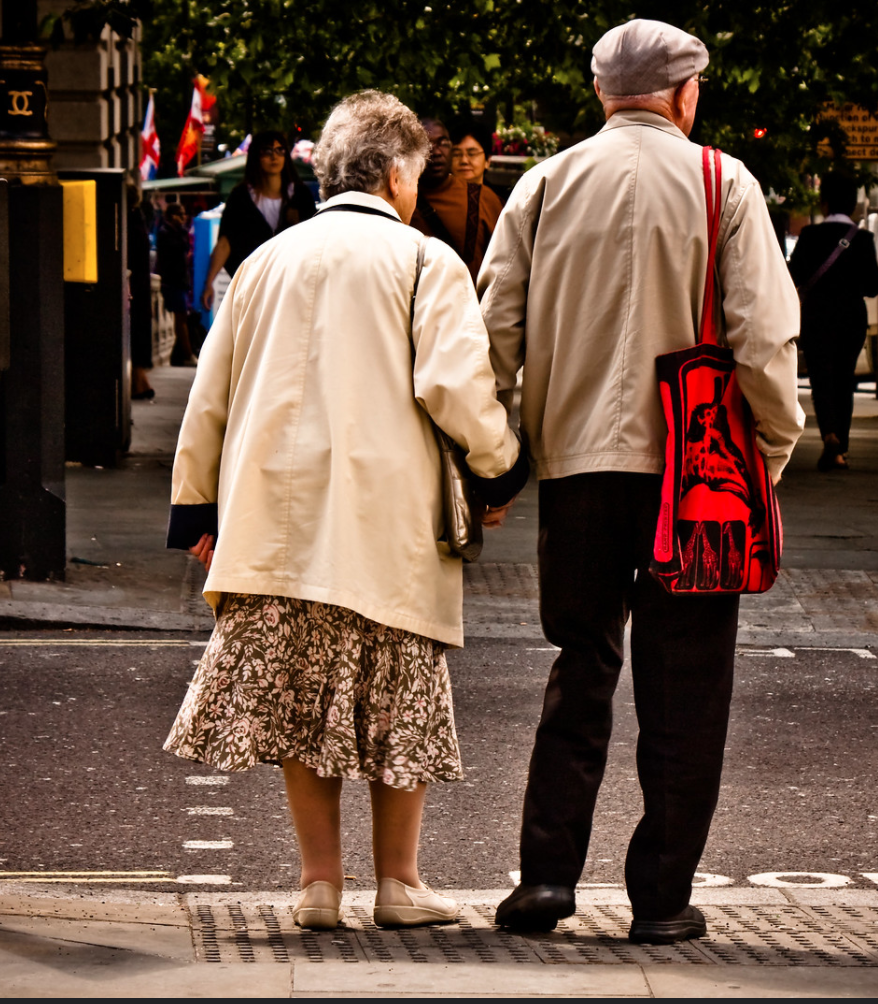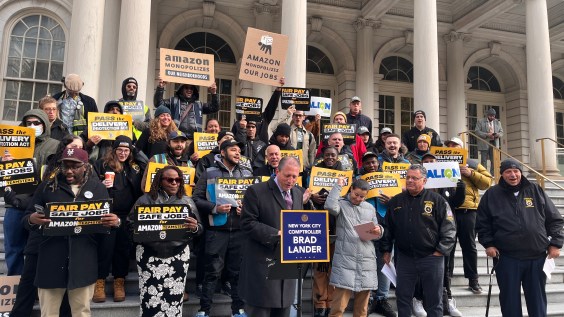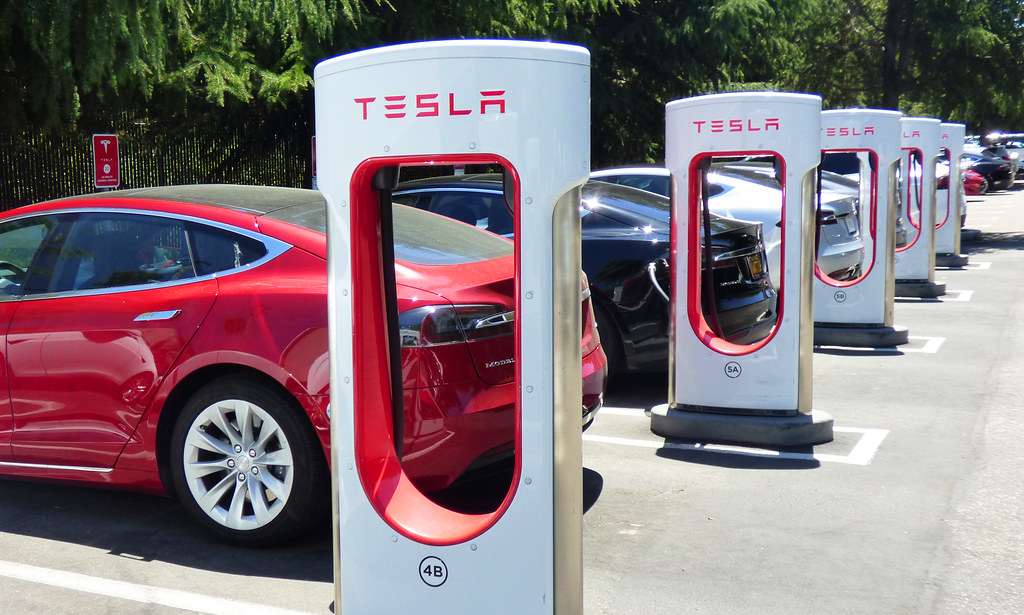Editor's note: This article originally appeared on Greater Greater Washington and is republished here with permission.
Greater Washington’s population of older adults is growing. (Editor's Note: Washington, D.C. isn't alone. One in five U.S. residents are projected to be over the age of 65 by the year 2050.) So too is the number of people with dementia and other age-related memory loss. That makes designing for dementia one of the key ways we can make our urban spaces work for the people using them.
31% of the region’s population growth between now and 2045 will comprise people over the age of 65. Among these hundreds of thousands of people, up to a quarter will have dementia and other memory loss at some point in their lives.
“Dementia” covers a range of conditions, like Alzheimer’s disease and vascular dementia, that comprise progressive memory loss and reduction of cognitive function, usually as people age. The changes people with dementia experience in their everyday activity vary from person to person.
Many assume that people with dementia live in institutional environments. But most people with memory loss age in their communities, cared for by family members who do not receive enough support. Those in nursing homes often face abusive, unhealthy, or unhappy environments. Thousands of people with dementia and memory loss died from the coronavirus pandemic in nursing homes. As a result of these trends, more families are now seeking to keep loved ones with dementia in the community.
But public spaces are often unusable by people with cognitive abilities affected by dementia. People with dementia often feel overwhelmed, get lost, have trouble, or face dangerous situations while trying to navigate cities. Skills that we take for granted are difficult for older adults with dementia, including the ability to find alternative routes, filter out extraneous sensory information, or remember directions. Much of this is unintentional: designers and planners are often unaware of these needs. That intent, however, does not change the impact.
How do we make urban spaces more dementia-friendly? Many of the solutions are surprisingly simple: walkable urban design and dementia-friendly design are often one and the same.
There are also specific interventions that can make public spaces easier for people with dementia, including wayfinding, sensory and generational variation, and special attention to sitting areas and surfaces.

Wayfinding is key. Many older adults with dementia easily get lost, or have trouble identifying landmarks. Some people with memory loss cannot comprehend images and need text to navigate; for others, it is the reverse. Providing various signs and other navigation clues can help. These clues may be tactile (through surface changes, for instance), in text, or in visual cues like signs and lines leading to areas. Large, visible landmarks are a plus, often easier to remember than a specific direction. And, of course, many older adults with memory loss also have other disabilities, so signage should be accessible.
One area with such wayfinding is The Wharf in Washington DC, which includes text, tactile, and visual cues like floor lines to help visitors navigate (ideally, the system should be more consistent across the Wharf).
Signage is important, but built interventions cannot substitute for human interaction. Staff at shops and other facilities need training to help people with memory loss when they need directions or help. Programs like the Dementia Friends USA video series offer free, accessible training that can make a big impact. Public safety workers in Montgomery County, with this training, have been able to enhance their services for older adults with dementia.
Making sure that stimulating, varied, and inter-generational spaces are part of an urban environment is also important. The vibrancy and cognitive engagement of walkable urban spaces can itself benefit people with dementia. Alison Gillespie, a Greater Greater Washington contributor who has cared for relatives with dementia, described this vibrancy to me as “the messiness of real life.” Engaging with “messiness” can improve the physical and mental well-being of people with dementia — partly because people with dementia, like everyone else, enjoy pleasant and vibrant spaces.
People with dementia are often isolated from spaces that provide variety, different sensory stimuli, or interaction with younger people. This loss of engagement can can hasten memory loss and is linked to poorer well-being and health outcomes.
Stimulating environments also simply bring joy. Gillespie told me that her mother loved watching and listening to the daily drama as she spent her last years in Downtown Silver Spring, and I have heard many similar stories.
Another good example of this kind of space is the Roosevelt Center in Greenbelt, which has plenty going on but also has safe and quiet seating areas to which people can retreat.
_800_548_90.jpg)
Special attention must also be paid to safety. People with dementia are at high risk of falls, which combined with other age-related conditions can be deadly. People with dementia can have difficulty noticing surface changes or staying balanced. Strategies like adding railings and making surface changes visible can help. So can choosing more slip-resistant and ice-resistant surfaces for paving and flooring, such as permeable asphalt. And so can creating clear paths with as few obstacles as possible. The consistent, permeable, and well-marked surfaces found in parts of Navy Yard are a good example of this approach.
Parking can be another problem area. People with dementia frequently fall in parking lots and have trouble perceiving when a driver is reversing out of a space. Reverse-angle parking can make it easier for drivers and older pedestrians to see each other.
A variety of seating areas can benefit older adults who cannot walk long distances or have difficulty standing while waiting. One example of a space with many good seating areas is Gallaudet University’s campus. Though designed for the needs of younger Deaf adults, their frequent benches and seating areas are an excellent example of age-inclusive design.
These design recommendations are not a substitute for listening to people with dementia, who should be engaged in design processes in some way, even if just in informal conversations. Planners and designers can learn from social programs for older adults with memory loss, including Club Memory at the Sibley Hospital, the Kensington Clubs in Rockville and Senior Center programming in Fairfax County (Disclaimer: as a research fellow with Montgomery County government, I wrote about some of these programs in great detail). People involved in planning, maintaining and advocating for public space can also complete the Dementia Friendly America training to learn how to better serve their neighbors with dementia. And, of course, if you have loved ones with dementia, or neighbors with memory loss, talk to them! You may be surprised at what you find out.







